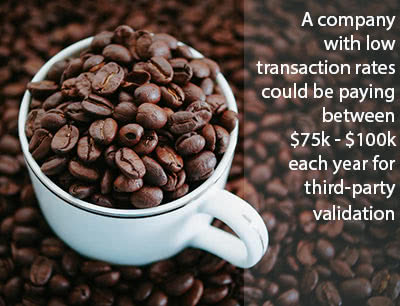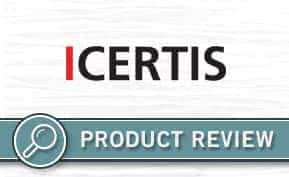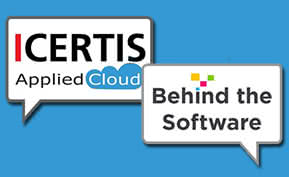Contract Management
Coffee, Contracts and Rebate Management Systems

I never used to drink coffee, but after the birth of my oldest daughter, I turned to the black energy juice to keep my eyes open throughout the day. I began my habit with a large cup of joe at Starbucks each morning, but the bill was hefty enough to break my routine. Next, I decided to make my coffee in house. Since I didn’t know much about coffee makers, I just purchased the cheapest model on the market. Unfortunately, the machine didn’t have a timer, and this left me anxiously awaiting my coffee each morning. The whole process became tedious, so I purchased a model with a timer. Then, as my coffee tastes matured, I began grinding my own beans. Again, this new process added time to my coffee routine, so I eventually opted for an integrated coffee maker with a timer and attached bean grinder.
Rebate Management Systems and Good Coffee
The saga of my morning coffee ritual mimics what a lot of companies go through with CLM software and rebate management systems. Many companies rely on resellers, distributors or other selling partners to dole out their goods, and they often employ rebates and other incentives to boost partner sales performance. Logistically, these activities add to the total number of transactions a company must process. Many companies, however, don’t have the systems in place to handle the growing number of transactions.
Rebate and incentive management systems help companies track, manage and organize the large volumes of rebate and incentive information flowing in and out of organizations. These solutions ensure accurate and efficient claims payments and reduce the chances of overpayments. Some systems are as simple (and error-prone) as spreadsheets, while others automatically validate incentive claims, ensure payment accuracy and seamlessly integrate with other enterprise resource planning (ERP) systems.

Yet most companies don’t have contract and rebate management systems in-house, so many turn to a third-party provider to validate and settle a partner’s claim for incentive payments. However, companies must create and manage contracts with various partners, and often rely on a separate system to create contracts and validate terms. Therefore, they must send the third-party providers all of the basic contract information in order to validate payments.
While paying for a third party to validate and pay the submissions might look inexpensive at first glance, in the long term, it can cost a great deal of time and money. For example, a company with low transaction volumes could be paying between $75,000 and $100,000 each year for third-party validation, while a larger company with higher volumes could easily be paying double that amount.
These concerns are similar to those raised during my coffee journey: I first opted for a third-party coffee vendor, but quickly realized I was overpaying for something that I could just as easily do in-house.
In order for manufacturers to bring the process in-house, the company must first select a system. However, similar to me selecting my first coffee machine, companies new to the process aren’t fully aware of their contracting needs and therefore risk selecting an ineffective system. For example, they often purchase inexpensive systems to cut costs, but over time these solutions don’t grow with them as their sales increase and needs change.
Thinking back to my coffee journey, I wish I would have known my real coffee needs upfront. While I probably wouldn’t have shelled out a few hundred dollars for a fancy coffeemaker initially, I likely would have been willing to invest money in a basic machine that could adapt as my coffee needs changed. While this feature isn’t possible with coffeemakers, it is possible with contract, incentive and rebate management systems. Companies can easily start with a SaaS-based solution and pay for only the features they want. Then, as a company grows, the contract and rebate management solution will scale with the business.
Integrated Contract and Rebate Management: The Benefits
Companies also need a solution that integrates their rebating system with their contract management system (like a coffee maker integrates with a timer and a bean grinder). By implementing an integrated contract and rebate system, manufacturers can ensure that rebates are paid based on contract terms and conditions. In addition, an integrated solution creates one source of truth for contracts. Therefore, Sally in finance won’t need to ask Jane in sales for the latest version of a contract. Instead, both can access the contract online and view the agreement’s history. In addition, as contracts are amended, the system can keep the rebates and contracts in sync to ensure that only the most accurate information is used to validate and pay rebates and incentives.
With a scalable, integrated solution, companies can start with a contract management system and eventually add a rebate management solution in order to manage contract prices as well as back-end rebates and incentives.
Companies should watch out for vendors that claim to support contract and rebate management without an integrated solution. While these solutions will give a company visibility into legal contracts and rebate terms, the solutions are built by different vendors and therefore are not truly integrated. As a result, the data entered into a contract is not used to create the rebate structures, a process that risks double entry and can keep contracts and rebates out of sync.
[Image courtesy of Brandon Shea]






